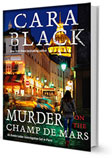
When Leonard Gardner’s (B.A., ’56; M.A., ’63) novel “Fat City” was published in 1969, the Atlanta Journal joined a national chorus of praise and proclaimed the story of two down-and-out boxers in Stockton, California, “destined to become a classic.”
“I hoped that guy knew what he was talking about, but I figured it was exaggerated reviewing,” says Gardner, now 82. In fact, the reviews have proven accurate. Adapted as an acclaimed movie directed by John Huston in 1972, “Fat City” has found one generation of admirers after another and has just been re-released in a New York Review Books Classics edition with a foreword by National Book Award winner Denis Johnson.
The novel’s grittily detailed, terse-yet-eloquent sentences have “not an extra word” in them, says Creative Writing Professor Peter Orner. From the way Stockton’s dirty hotels and destitute bars come to life, “I think anyone can learn how to create a visual picture on the page with the cooperation of the reader to see everything ourselves,” Orner adds. “He’s an impressionist, really.”
Raised in Stockton by a father who had been an amateur boxer, Gardner discovered that lean style one night in a used bookstore when he picked up an anthology and read his first Ernest Hemingway story, “The Killers.” He later followed his older sister to San Francisco, where he enrolled at SF State and started writing “Fat City.” Professors like Mark Harrison told him, “Don’t be overcritical, just keep writing.” Gardner applied for and won the Henry Jackson Award: $1,000. “So I kept going,” he says, “and I worked as a parking attendant, managed to squeeze by.”
Through being drafted by the Army, stationed in Louisiana, then returning to school, he continued the book, paring it from nearly 400 pages to 189. “I tried to get it so every line had value,” he says. He is often asked why he never wrote another novel.
“My agent thought I got intimidated by the pressure that came with all the praise,” Gardner says. “Maybe I started living in a way that wasn’t good for me. I should have stayed poor.”
But Gardner’s place in American literary history appears secure. “‘Fat City’ was ahead of its time,” Orner says. “I put it up there with ‘The Great Gatsby’ in telling us who we are.”
We’re Also Reading

“The Suicide Club” (University of Georgia Press, ’15) by Toni Graham(M.F.A., ’06), a wickedly funny set of interconnected stories focused on grief in middle America.
Gordon Chin’s (M.S.W., ’74) “Building Community, Chinatown Style, A Half Century Of Leadership In San Francisco Chinatown” (Friends of the CCDC, ’15), a compelling exploration of Asian-American civic and political power in San Francisco from the 1960s to the election of Mayor Ed Lee.
“The Tangled Web of the Civil War and Reconstruction: Readings and Writings from a Novelist’s Perspective” (Rowman & Littlefield, ’15), David Madden’s (B.A., ’55) deep dive into fiction and nonfiction that emerged from the era.
Cara Black’s (B.A., ’79) “Murder on the Champ de Mars” (Soho Crime, ’15), the latest tale of suspense in the bestselling author’s Paris-based Aimee Leduc mystery series.